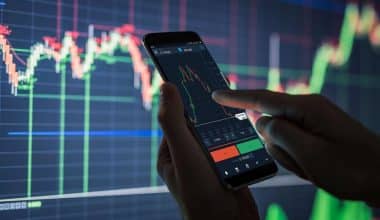Oil trading is a sophisticated financial practice that demands an extensive comprehension of various factors. Trading volume is a critical variable that oil traders must consider while engaging in oil trading. In essence, trading volume reflects the total number of shares or contracts traded within a particular time frame. The impact of trading volume on oil trading is significant, as it affects the market’s liquidity, volatility, and price movement. Expert traders are also using Oil Trading Platform for automated oil trading.Traders who understand the dynamics of trading volume and its effects on oil trading can make informed decisions that could lead to more profitable trades. In this article, we will delve into the implications of trading volume on oil trading and offer insights that could enhance your understanding of the market.
Understanding Trading Volume
Trading volume is a crucial component in the functioning of financial markets. It provides insights into the level of activity within the market, the number of participants, and the degree of interest in particular financial instruments, such as shares, contracts, or commodities.
In oil trading, trading volume is one of the primary indicators used to evaluate the level of market interest in a specific oil futures contract. Essentially, trading volume represents the total number of contracts or shares of a given financial instrument that have been traded over a specific period of time. This information is valuable to investors as it can provide valuable insights into the current state of the market.
A higher trading volume typically suggests that there are a greater number of buyers and sellers actively participating in the market. This, in turn, can lead to increased liquidity and volatility. Liquidity, in financial markets, refers to the ease with which an asset can be bought or sold without affecting its price. The higher the trading volume, the greater the liquidity, which can be beneficial to traders as it allows for a more efficient and effective trade execution.
Additionally, volatility refers to the degree of price fluctuation in the market. In a high volume market, the increased number of participants and the frequency of trading can lead to more frequent price changes, which provides traders with more opportunities to buy or sell an asset at a favorable price. On the other hand, lower trading volumes imply a lower level of market interest, which can result in wider bid-ask spreads, making it more challenging to buy or sell an asset at the desired price.
Effects of Trading Volume on Oil Trading
The volume of trading has a significant impact on the oil market, particularly on price movements. When trading volume is high, it tends to result in more substantial price swings, which can offer opportunities for traders to earn profits. Moreover, higher trading volume can increase market liquidity, making it easier for traders to buy or sell positions swiftly and at a reasonable price.
However, low trading volume can present difficulties for oil traders. With fewer buyers and sellers, it can be challenging to find partners to execute trades, which may cause wider bid-ask spreads and increased slippage. Low trading volume can also increase volatility and price fluctuations, making it more challenging for traders to manage risks effectively. Therefore, traders must be aware of the volume of trades in the market and consider its potential impact on oil prices and market liquidity before executing any transactions.
Using Trading Volume in Your Trading Strategy
Trading volume is an important metric for oil traders who want to develop a successful trading strategy. By keeping track of trading volume, traders can gauge the level of interest in a specific oil futures contract. This information can help traders predict price movements and identify profitable opportunities.
Furthermore, monitoring trading volume can provide insight into market liquidity, which is crucial for making informed decisions about entering and exiting positions. This knowledge can help traders avoid entering into illiquid markets where it may be challenging to buy or sell assets at a favorable price.
Conclusion
Trading volume is a critical variable that oil traders need to pay attention to when developing their trading strategies. By understanding the effects of trading volume on oil trading, you can make more informed decisions about when to enter and exit positions, and identify potential opportunities for profit. Whether you’re a seasoned oil trader or just starting out, taking the time to understand trading volume can help you become a more successful and profitable trader.






